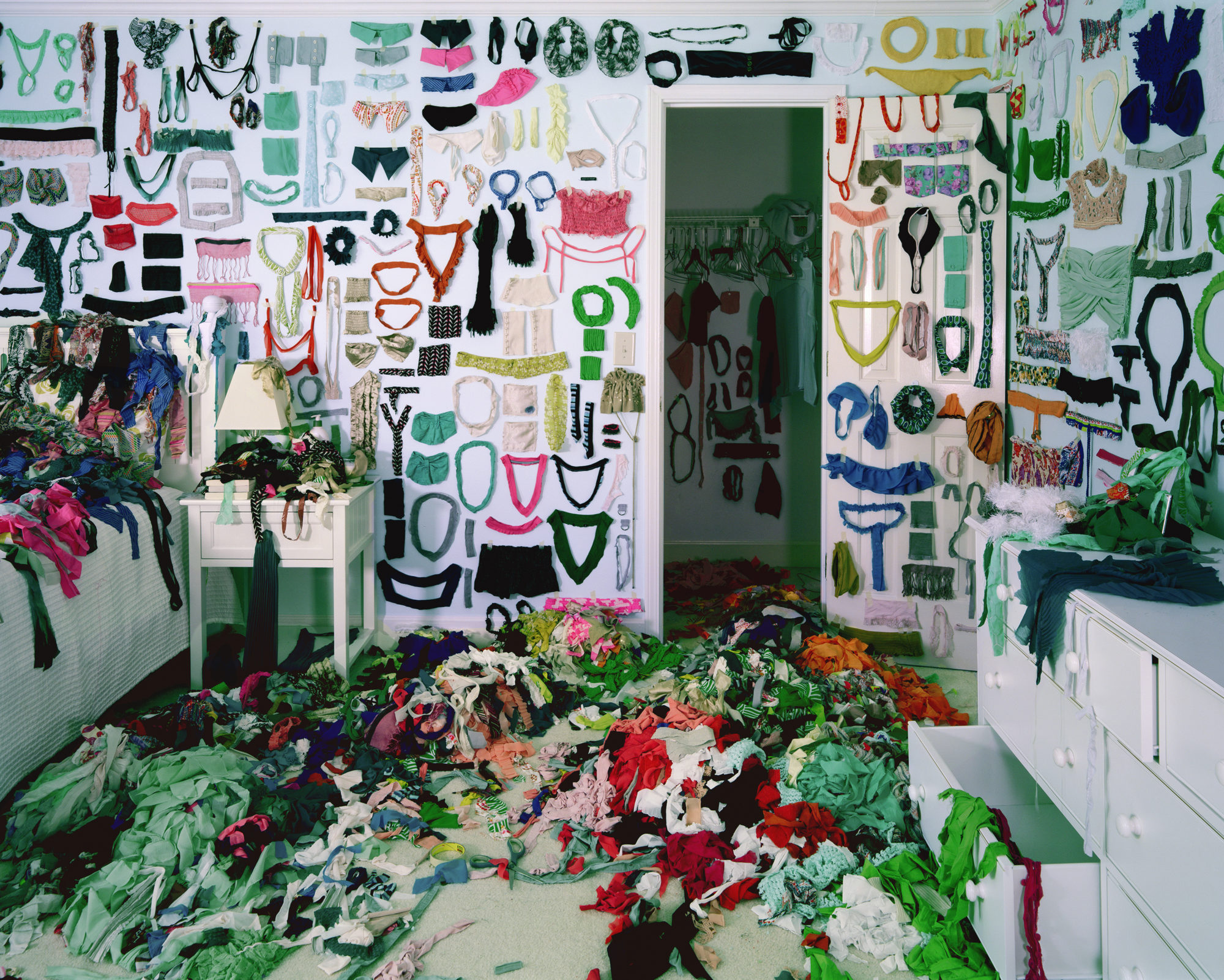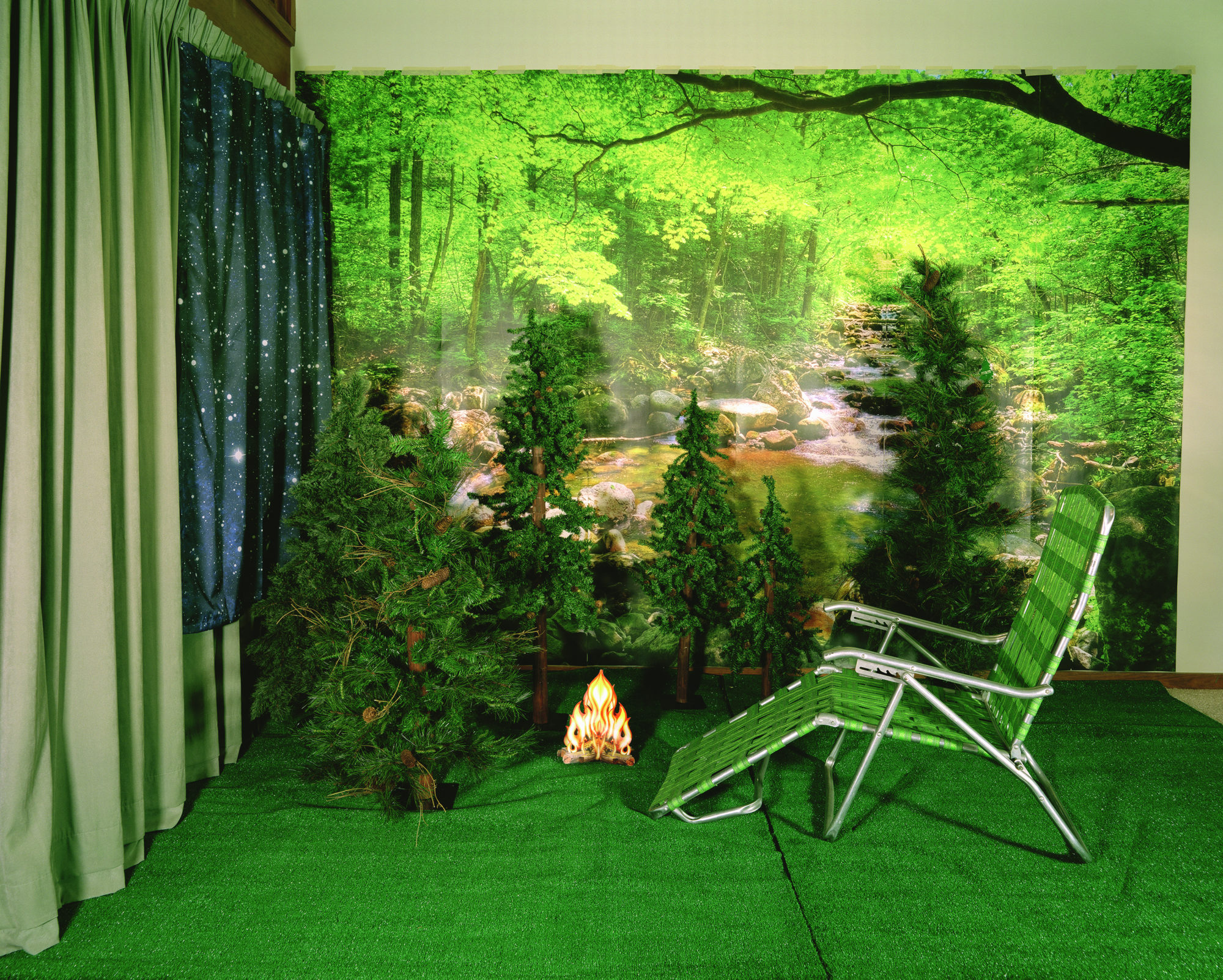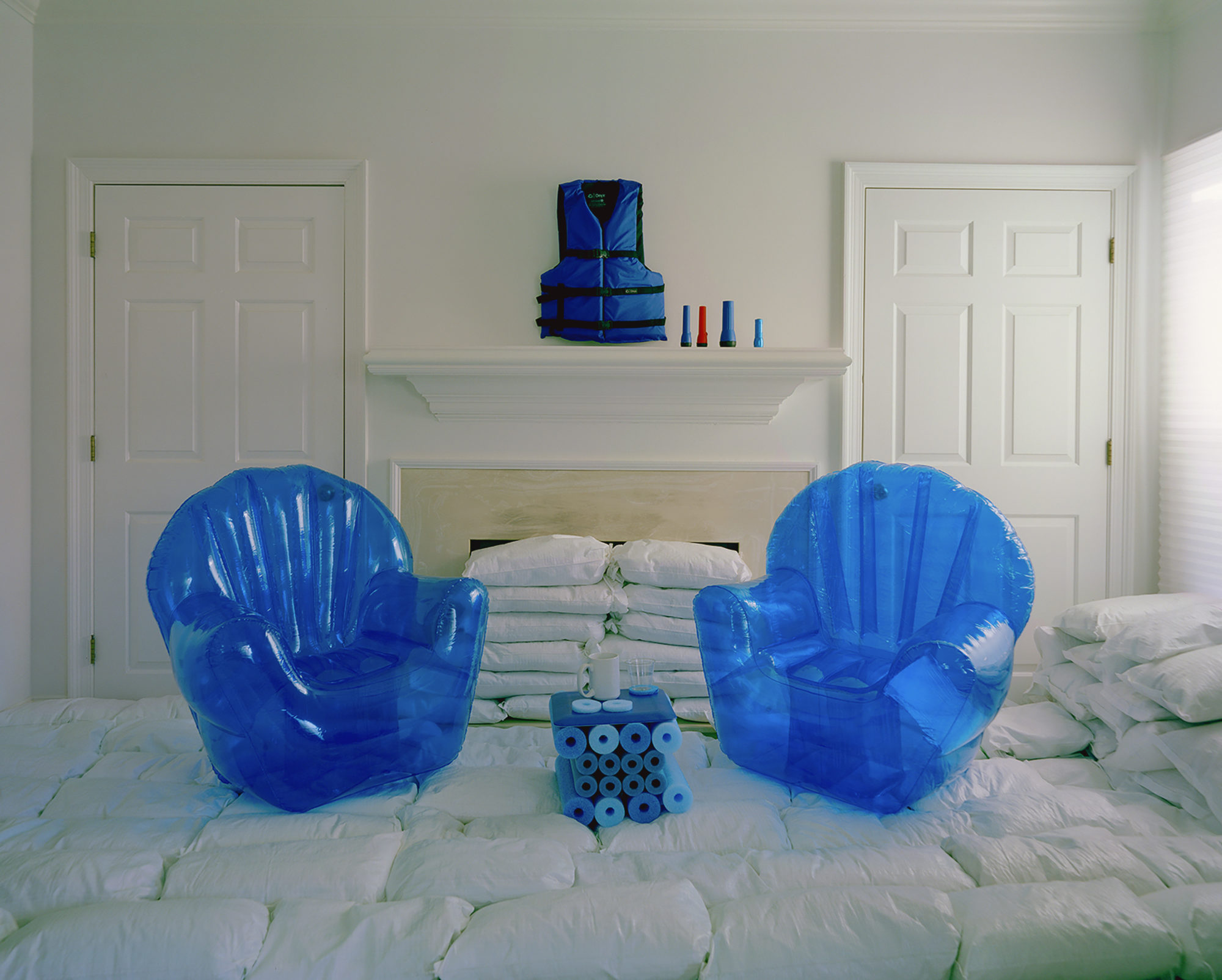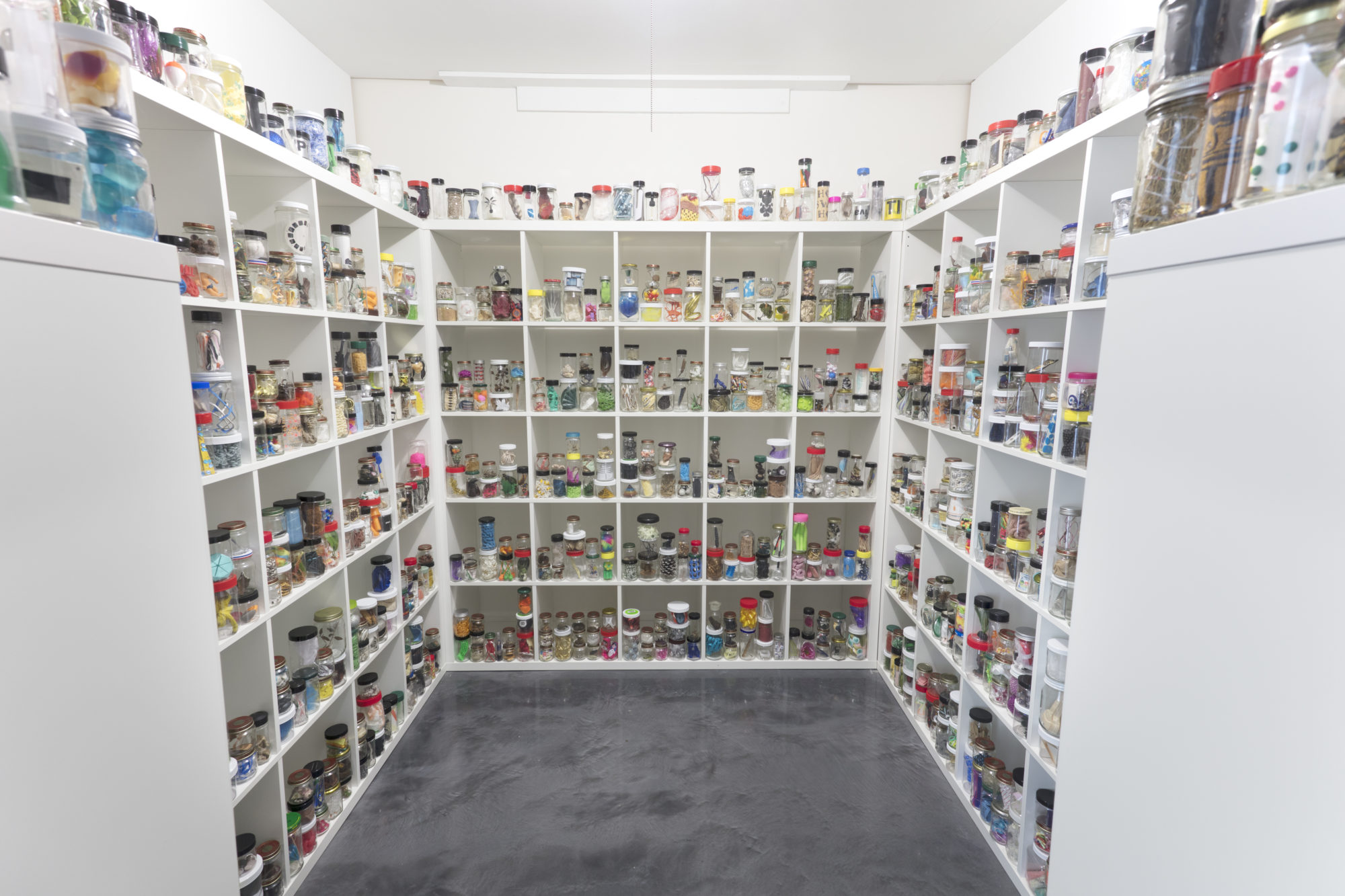Order & Chaos

Sarah Hobbs, “Emotive, Methodical,” 2018, chromogenic print, 48 x 60 inches [courtesy of the artist and HATHAWAY, Atlanta]
Share:
In ancient times, when philosophy informed the sciences and our knowledge of the brain was speculative or mythological, the anatomical location of the mind was contested. Early Egyptians believed the mind resided in the heart. They therefore removed the brain before burial but left the heart in its place. Some ancient Romans and Greeks believed in mind body dualism (later reframed by Descartes)—that the mind was of a separate entity, rather than residing in any organ. Hippocrates wrote of the mind residing in the brain; Aristotle, the heart, but he specified that emotions were regulated by the brain. Scholars further intermeshed science and philosophy with the distinction of the mind and the soul, questioning where—if not in the mind—the soul resided. Plato, Hippocrates, and Da Vinci weighed in, hypothesizing the location of each. Today we know significantly more about the mind but are still left with an abstracted understanding of the soul. In Twilight Living at HATHAWAY, Sarah Hobbs creates interior scenes that embody the action, energy, and residence of both.
Twilight Living is Hobbs’ first solo exhibition in Atlanta since 2009. It features seven photographic works and one installation. Each large-format photo depicts a staged room of ordinary objects arranged in extraordinary ways. The lighting is as precise as on a movie set, and the spaces shown in Hobbs’ photographs feel like glimpses into private realms. The photographs are portraits, but without the preciousness or premeditation of ones concerned with exact likeness. Instead, they represent a person who has just exited the room. In her artist statement, Hobbs writes, “Twilight Living is an exercise in topoanalysis–the psychological study of the sites of our intimate lives. What do we do in our private spaces to assuage our anxiety in the ambiguous times in which we live?” She states, “Twilight is the space between the known and unknown. I am interested in the various ways we attempt to cope in this space …. How one might attempt to deal with the ambiguity is the essence of this work.”
Sarah Hobbs, “Private Nature,” 2019, chromogenic print, 48 x 60 inches [courtesy of the artist and HATHAWAY, Atlanta]
In the photograph Emotive, Methodical, which is set in a bedroom, hundreds of scraps of brightly colored clothing lay in piles on the floor and across the bed. Pinned across the wall, like collected butterfly specimens, are more scraps of clothing—collars, frills, cuffs, and ribbons—in every kind of material. One could imagine the creation of these fragments to have been rash or violent, but the organization and display feels ordered, gentle, and even obsessive-compulsive. In her artist talk, Hobbs described the aftermath of an emotional act. With this in mind, the objects hanging on the walls in this image look like someone’s penitential attempt to put back together something broken. The room personifies the complex process of coping and making sense of things—how one orders chaos and distills life’s disappointments. If this scene had a tense, it would be the past perfect—energy asserted and exhausted.
Rothko once said, “Art to me is an anecdote of the spirit.” He intended the large fields of color in his paintings to fill the viewer’s range of vision and offer a space of entry and transcendence. Hobbs’ photographs are like Rothko’s sublime settings for the neurotic. The works in Twilight Living seems to represent a different mental state and metaphorical interior place. They are unrelenting and obsessive.
In Private Nature, a lawn chair sits atop artificial turf in a room lined by curtains printed with scenes of the night sky and forests. Miniature, fake evergreens surround the chair, and a cardboard cutout of a bonfire is propped up at its feet. The work addresses coping and retreating, constructing alternative truths to build a more hospitable environment. It is a spot of serenity to retreat to when, as Hobbs observes “the outside world is so heavy, you must go inside.”
Viewed from a distance, the interior space depicted in Living, But Flood-Ready is reminiscent of a solitary confinement cell—all white and padded. A close look reveals what look like floor cushions to be sandbags, stacked to a seemingly anticipated flood level. Atop the sandbags are inflatable furniture; and above the mantle of the fireplace, a life vest and four flashlights. The title hints at the limited life that overcaution allows—preparedness born out of fear, not practicality—and the way that limits our living. Anxiety keeps one always ready, expecting the water to rise, prepared for the disaster that rarely comes.
Sarah Hobbs, “Living, but Flood-Ready,” 2019, chromogenic print, 48 x 60 inches [courtesy of the artist and HATHAWAY, Atlanta]
Untitled (Spare Room) could be a still life study or a dessert advertisement from the 1950s. Gelatin molds of many tints, colors, and forms line the picket-fence-white shelves of an otherwise empty room—over 130 in total—some atop ceramic or crystal serving platters and stands. Some are melting or moldy, calling attention to the possibility that the gelatin has been sitting on the shelves for some time, probably made and then pushed behind others to make room for the next. Possibly exaggerated by the 50s aesthetic, this presentation evokes striving for the mark of perfection but missing it. The scene is absurd and somewhat nauseating, but it fits Hobbs’ conception of coping: busying one’s body with unproductive or unnecessary work often soothes the anxious spirit.
During her artist talk, Hobbs referred to the strange excitement and enjoyment of not only busying oneself with creation, but also with destruction. Although many of the photographs flirt with this theme, the emotionally darkest work in the show is Permanent Marker (occupied bedroom). A plush, white bedspread below a pillowed, white headboard serves as the focal points of a room with luscious, white carpet and black, textured wallpaper. Black markers litter the floor. Someone has scribbled in permanent marker on the edges of the bedspread; the silk lampshade; the white, translucent curtains. The walls are covered in the same violent, repetitive marks over wallpaper that was once a white and pink floral pattern. The nature of Hobbs’ photographs, which all portray some level of organized chaos, match the method and character of the subject who would have made them—beset with compulsion and emotion.
Sarah Hobbs, “Everything and Nothing You Need (cellar),” 2019, wood structure, light bulb, glass and plastic jars, misc objects [courtesy of the artist and HATHAWAY, Atlanta]
Through the installation work, we are reminded that Hobbs is the creator and subject of these photographed rooms, not a documentarian. Small, lined shelves filling a pantry-sized room, each one containing a different type of item. Viewers’ eyes wander and search the mass for details: dead bees, keys, dental molds, pencils sharpened down to the nub, an origami crane, matches, an hourglass, a used tissue with a stamp of lipstick, friendship bracelets, a Rorschach blot, caution tape, a spool of thread, shells, sequins, a sea sponge, rose quartz, a dead crab, strips of fortune cookie fortunes, bundles of dried sage, tinsel, a zipper, a fossil, pills, glow in the dark stars.
Particularly in this installation, Hobbs questions and celebrates why we collect. Collecting is soothing; it simulates control, like other coping practices depicted in the photographs. Surrounded by collected items—things of little use or monetary value—there is a peace in the acquisition and order of things. Each jarred trinket or memento represents another memory, preserved. But collecting can also be obsessive: always looking, incessantly making, hoarding, and wanting—on a search for something, but never finished.
Twilight Living explores how we react to the unknown and the in-between. Hobbs depicts psychological states of mind, safe spaces, and coping mechanisms. Although these creative and coping processes require destruction, the scenes exhibit restraint and order, providing harmony and pattern to entropy. Twilight Living makes visible the spare room of the mind where we explore and expel our neuroses: capturing and distilling, blocking out, organizing, escaping, destroying, and ultimately reflecting and distorting reality where necessary.


